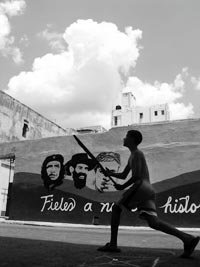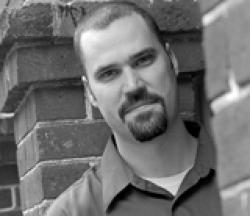This new year marks two separate but linked anniversaries: the fiftieth anniversary of Fidel Castro’s rise to power in Cuba—touching off the precipitant Bay of Pigs invasion, the Cuban Missile Crisis, and the spread of paramilitarism across Latin America—and the twentieth anniversary of the fall of Communism in Eastern Europe—with the election of Solidarity candidates in Poland, the dramatic dismantling of the Berlin Wall, the Velvet Revolution in Czechoslovakia, and the overthrow of the Communist regime in Romania. In the American popular imagination, these two approximate dates bookend the height of the Cold War—from the arrival of Communism in the New World to its downfall in Europe.
But the course of events is never so tidy. There was a long preamble—the Berlin airlift, the CIA overthrow of Mohammed Mossadegh in Iran, the Korean War, rising tensions in French Indochina—but, just as importantly, there has been a long residuum, an era of aftershock to which we, as Americans, have paid too little attention. Our recent focus on Afghanistan, Iraq, Iran, and the “global war on terror” has overshadowed the ongoing balkanization of the former Yugoslavia and the emergent republics of the former Soviet Union, and all but eclipsed our former fixation on Guatemala, Nicaragua, Colombia, and Chile. Even Cuba is forgotten. Yet, the ghosts of the Cold War are all around us: they rise as bones from fresh graves; they return as evidence—documents, snapshots, heirlooms—of the disappeared, the tortured, the executed.
We begin this issue with three essays exploring Castro’s legacy in Cuba. Neil Shea retraces Fidel’s footsteps on the path to Revolution. Along the way, Shea explores what Castro’s brand of nationalist Communism has meant for Cuba—swells of patriotism, intermingled with malaise at the culture’s stagnancy. Lygia Navarro examines what happens when that brand of Cuban malaise turns to hopelessness under a regime that refuses even to acknowledge depression and other mental illnesses. In a country hailed worldwide for its healthcare system, doctors cannot prescribe antidepressants, so record numbers of people turn to the black market in sedatives—or to suicide. Paul Reyes personalizes that despair, as he travels with his father and uncle on their first return to Cuba in forty-six years, after their family chose exile over persecution. What Reyes encounters reminds us that the impact of ideology is as often personal as it is political.
So, too, our other remarkable contributors. Álex Ayala Ugarte visits the Bolivian villages where Che Guevara was captured and killed. Matthew Fishbane accompanies physical anthropologists, as they excavate graves and attempt to identify remains in Colombia’s dirty war. Sylvia Sellers-García travels to the secret police archive in Guatemala City after the announcement that documentation of her long-disappeared uncle has been uncovered. Binh Danh and Robert Schultz collaborate on a haunting series of art pieces and poems that commemorate the prisoners executed by the Khmer Rouge at Tuol Sleng. Laleh Khadivi’s short story probes the legacy of the Iranian Revolution, Mahmoud Darwish’s poems the Israeli-Palestinian Conflict. Dimiter Kenarov tours the haunts of Radovan Karadžić, the “Butcher of Bosnia,” who dodged justice by pretending to be a faith healer and relying on the residual vicious patriotism that fueled his rise, while Pauls Toutonghi returns to his grandparents’ home in Latvia to dig for the heirlooms they buried in their basement in 1944 as the Russians approached.
The issue concludes with examinations of how we have sought to understand the Cold War’s legacy. Vinnie Wilhelm’s story is a wise and wise-cracking fictional send-up of just about everything we thought we understood—from the life of Trotsky to the length of Castro’s Cohiba cigars. J. Hoberman delves into the new Steven Soderbergh two-part epic film based on the life of Che Guevara. Both explore how the film industry has sought to profit from revolution; if such discussions sometimes verge on the ridiculous, there is nothing funny about what they reveal.
David J. Morris, in his unflinchingly honest account of his SERE training, examines how we came to accept torture as a necessary tool. It is also a reminder of what the incoming Obama administration must undo. The president-elect, soon to be president, has vowed to close the American prison at Guantánamo upon his inauguration. That act will send a global message, but it will take years to reverse the world’s perception that torture and brutal interrogations on Cuba’s coast now take place at the hands of American citizens, not only Castro’s General Intelligence Directorate; that the methods American pilots were trained to withstand at the hands of Mao’s secret police have been employed now by our own military.
If, indeed, this is to be a “new day in America,” we will need to acknowledge not only the errors of the past eight years, but also the misdeeds of the Cold War—and the periods of rapacious expansion and brutal enslavement that preceded it. We must protect those yearning to breathe free on distant shores, not only those whose ancestors were lucky enough to reach ours. We must say not only to ourselves but to the world, “We are not enemies, but friends.” Our memory must stretch beyond the battlefields of Iraq and the patriot graves of Arlington to the killing fields of Cambodia and the mass graves of Srebrenica. We must swell the chorus to include the silenced and disappeared, the Union to encompass the whole of our wounded and imperiled world.








